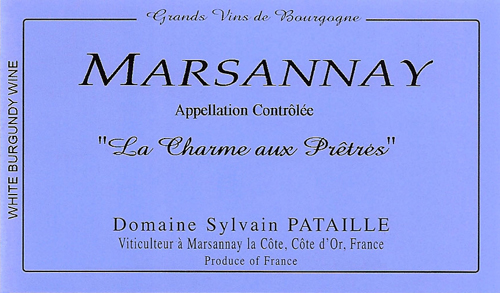Marsannay La Charme Aux Prêtres
At a Glance
- Size: 0.17 ha (0.41 ac)
- Variety: Chardonnay
- Vine Age: Planted in 1985
- Terroir: Moderate slope facing east. Gravelly, reddish brown soils on changing types of limestone bedrock: a entroque, Comblanchien, Ostrea acuminata marl. 280-300-meters elevation.
- Viticulture: Certified organic
- Vinification: Gentle pressing, indigenous yeast fermentation. Aged for 24 months in barrel (1/3 new oak), low sulfur additions only at bottling.
Additional Info
Etymology: Charme (but more commonly Chaume) is a term that is used in Burgundy to designate fallow land or a place so rocky that few plants will grow on it.
Prêtre means priest.
Therefore, this was most likely a chaume that belonged to the Church.
The name was changed in the early 20th century to Les Rosey. You can find either of the names, or both, on the various vineyard maps of Burgundy.
Sources: The Climats and Lieux-Dits of the Great Vineyards of Burgundy, Marie-Hélène Landrieu-Lussigny; Inside Burgundy, Jasper Morris.
Site: The vineyard spans most of the mid to lower slope, with an elevation of approximately 280-300 meters. Overall, the vineyard has a moderate slope with occasional small undulations throughout. It faces east.
Geology: According to Francoise Vannier’s map, Charme Aux Prêtres contains three distinct types of limestone: the upper portion consists of the fossiliferous Calcaire a entroque. Downslope, two significant faults have exposed a down-dropped block of younger, harder Comblanchien limestone, followed by another fault and a sliver of Ostrea acuminata marl towards the bottom of the vineyard. But Sylvain disputes this. He has Chardonnay planted at the top of the slope and Aligoté and Chardonnay at the bottom. Regardless of variety and position, he notices a reductive minerality from the wines which he believes comes from marl. His opinion is that the vineyard is mostly on Ostrea acuminata marl. Marsannay was the first village study Françoise conducted. She has since learned to dig more pits for analysis. She concedes that she may have to revise her opinion on a few of the Marsannay vineyards.
Soil: The soils here are variable but are generally reddish-brown in color and average approximately 40 cm in depth. The soil is gravelly, with up to 40% angular gravels.
We are greatly indebted to Brenna Quigley for the geology and physical descriptions.

